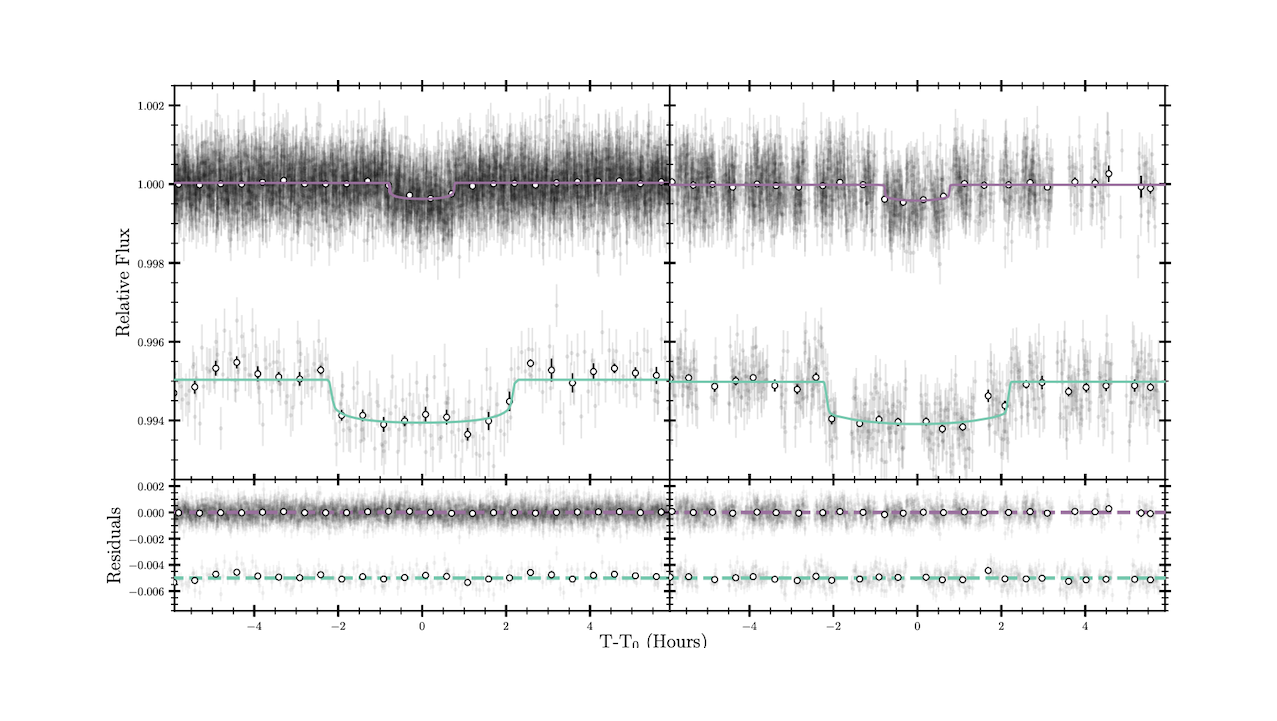Science
Scientists Discover New Super-Earth and Sub-Neptune Orbiting TOI-2345

Researchers have identified two new exoplanets, a super-Earth and a sub-Neptune, orbiting the metal-poor star TOI-2345. This discovery could provide significant insights into the connection between stars and their orbiting planets, potentially influencing our understanding of planetary formation and evolution across the universe.
The newly discovered planets are designated TOI-2345 b and TOI-2345 c. The former is a super-Earth with a remarkably short orbital period of 1.05 days, while the latter is a sub-Neptune that completes its orbit in 21 days. These findings add to the limited data available on planetary systems around thick disk stars, which are characterized by their unique chemical compositions.
Key Characteristics of TOI-2345 b and TOI-2345 c
The research team utilized data from the Transiting Exoplanet Survey Satellite (TESS), which observed TOI-2345 across four sectors. In addition, they conducted five observations with the CHEOPS satellite and obtained 26 radial velocity measurements using the HARPS spectrograph.
Through a combined analysis of these data sources, the team determined that TOI-2345 b has a radius of 1.504 times that of Earth and a mass of 3.49 Earth masses. In contrast, TOI-2345 c has a radius of 2.451 times that of Earth, with a mass measuring 7.27 Earth masses.
To investigate the potential chemical links between these planets and their host star, the researchers modeled the interior structures of the planets, taking into account the devolatized stellar abundances. This approach is critical for understanding how varying chemical compositions may influence planetary characteristics.
Implications for Planetary Formation Theories
The discovery of TOI-2345 b and TOI-2345 c challenges existing theories regarding the formation and diversity of planets around thick disk stars. The presence of an ultra-short period super-Earth alongside a sub-Neptune illustrates a wide period distribution that spans the so-called “radius valley,” a range where fewer planets are typically found.
This research, led by Yoshi Eschen and his team, has been accepted for publication in the journal MNRAS and highlights the importance of characterizing exoplanets surrounding chemically diverse stars. As scientists continue to explore these celestial bodies, the findings from TOI-2345 may shed light on the broader processes that govern planet formation in our galaxy.
Such studies not only enhance our understanding of exoplanets but also contribute to the ongoing quest to unravel the mysteries of the universe and the potential for life beyond Earth. For further details, the research can be cited as arXiv:2510.12783 [astro-ph.EP].
The implications of these findings extend beyond academic interest, as they may provide critical insights into the conditions that lead to the formation of planets similar to our own. As the field of exoplanet research advances, the discoveries surrounding TOI-2345 serve as a testament to the relentless pursuit of knowledge in the realm of astronomy.
-

 Science2 months ago
Science2 months agoInventor Achieves Breakthrough with 2 Billion FPS Laser Video
-

 Health2 months ago
Health2 months agoCommunity Unites for 7th Annual Into the Light Walk for Mental Health
-

 Top Stories2 months ago
Top Stories2 months agoCharlie Sheen’s New Romance: ‘Glowing’ with Younger Partner
-

 Entertainment2 months ago
Entertainment2 months agoDua Lipa Aces GCSE Spanish, Sparks Super Bowl Buzz with Fans
-

 Health2 months ago
Health2 months agoCurium Group, PeptiDream, and PDRadiopharma Launch Key Cancer Trial
-

 Top Stories2 months ago
Top Stories2 months agoFormer Mozilla CMO Launches AI-Driven Cannabis Cocktail Brand Fast
-

 Entertainment2 months ago
Entertainment2 months agoMother Fights to Reunite with Children After Kidnapping in New Drama
-

 World2 months ago
World2 months agoR&B Icon D’Angelo Dies at 51, Leaving Lasting Legacy
-

 World2 months ago
World2 months agoIsrael Reopens Rafah Crossing After Hostage Remains Returned
-

 Business2 months ago
Business2 months agoTyler Technologies Set to Reveal Q3 Earnings on October 22
-

 Health2 months ago
Health2 months agoYouTube Launches New Mental Health Tools for Teen Users
-

 Health2 months ago
Health2 months agoNorth Carolina’s Biotech Boom: Billions in New Investments









